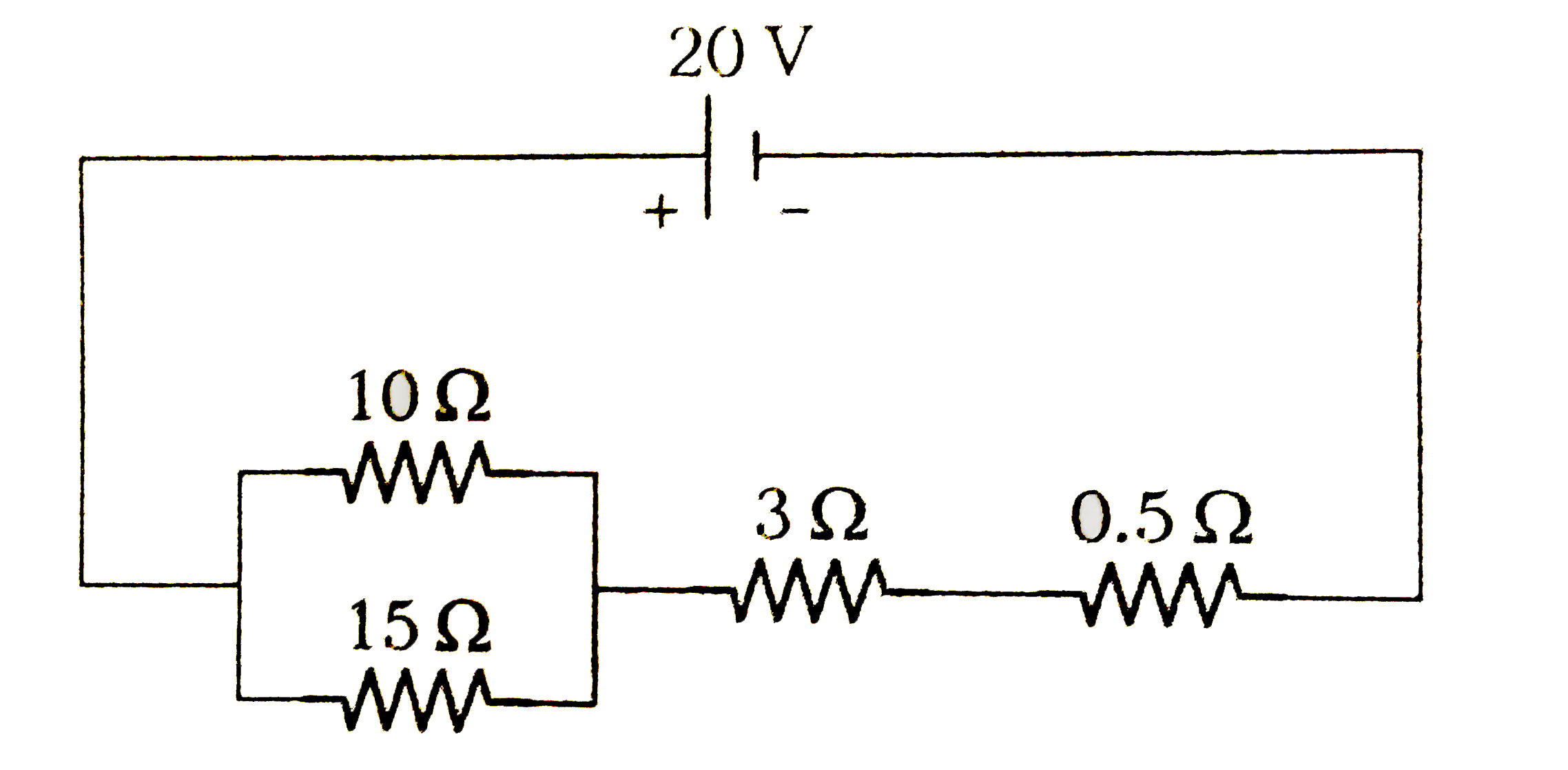If alternating current of rms value ‘a’ flows through resistance R then power loss in resistance is-
zero
a2R
a2R2
2a2R
The correct Answer is:B
To find the power loss in a resistance when an alternating current of RMS value 'a' flows through it, we can follow these steps:
1. Understanding RMS Current:
The RMS (Root Mean Square) value of the alternating current is given as 'a'. This value represents the effective value of the current that would produce the same power as a DC current.
2. Power Formula:
The average power (P) dissipated in a resistor when an alternating current flows through it can be calculated using the formula:
P=Vrms⋅Irms⋅cos(ϕ)
where Vrms is the RMS voltage, Irms is the RMS current, and ϕ is the phase difference between the current and voltage.
3. For a Purely Resistive Circuit:
In a purely resistive circuit, the phase difference ϕ is 0 degrees. Therefore, cos(ϕ)=cos(0)=1.
4. Relating Voltage and Current:
For a resistive load, Ohm's law states that:
Vrms=Irms⋅R
Given that Irms=a, we can express the RMS voltage as:
Vrms=a⋅R
5. Substituting into Power Formula:
Now, substituting Vrms into the power formula:
P=(a⋅R)⋅a⋅1
Simplifying this gives:
P=a2⋅R
6. Conclusion:
Thus, the power loss in the resistance when an alternating current of RMS value 'a' flows through it is:
P=a2R
Final Answer:
The power loss in resistance is P=a2R.
---
The RMS (Root Mean Square) value of the alternating current is given as 'a'. This value represents the effective value of the current that would produce the same power as a DC current.
The average power (P) dissipated in a resistor when an alternating current flows through it can be calculated using the formula:
P=Vrms⋅Irms⋅cos(ϕ)
where Vrms is the RMS voltage, Irms is the RMS current, and ϕ is the phase difference between the current and voltage.
In a purely resistive circuit, the phase difference ϕ is 0 degrees. Therefore, cos(ϕ)=cos(0)=1.
For a resistive load, Ohm's law states that:
Vrms=Irms⋅R
Given that Irms=a, we can express the RMS voltage as:
Vrms=a⋅R
Now, substituting Vrms into the power formula:
P=(a⋅R)⋅a⋅1
Simplifying this gives:
P=a2⋅R
Thus, the power loss in the resistance when an alternating current of RMS value 'a' flows through it is:
P=a2R
The power loss in resistance is P=a2R.
Similar Questions
Knowledge Check
An alternating current of rms value 5A, passes through a resistance of 24Ω. What is the maximum P.D. across the resister?
A17 VB34 VC170 VD10 VA capacitor C=2μF and an inductor with L = 10 H and coil resistance 5 Ω are in series in a circuit. When an alternating current of r.m.s. value 2 A flows in the circuit, the average power in watts in the circuit is
A100B50C20D10A sinusoidal alternating current of peak value (I0) passes through a heater of resistance R. What is the mean power output of the heater?
A(A) I20RB(B) I20R2C(C) 2I20RD(D) √2I20R
A battery is of emt E and internal resistance r. The value of external resistance R so that the power across eternal resistance is maximum :
View SolutionAn expression for rate of heat generated, if a current of I ampere flows through a resistance of RΩ, is
View SolutionA direct current of 2 A and an alternating current having a maximum value of 2 A flow through two identical resistances. The ratio of heat produced in the two resistances will be
View SolutionA direct current of 2 A and an alternating current having a maximum value of 2 A flow through two identical resistances. The ratio of heat produced in the two resistances will be
View SolutionIn the circuit, the current flowing through 10Ω resistance is

View Solution

